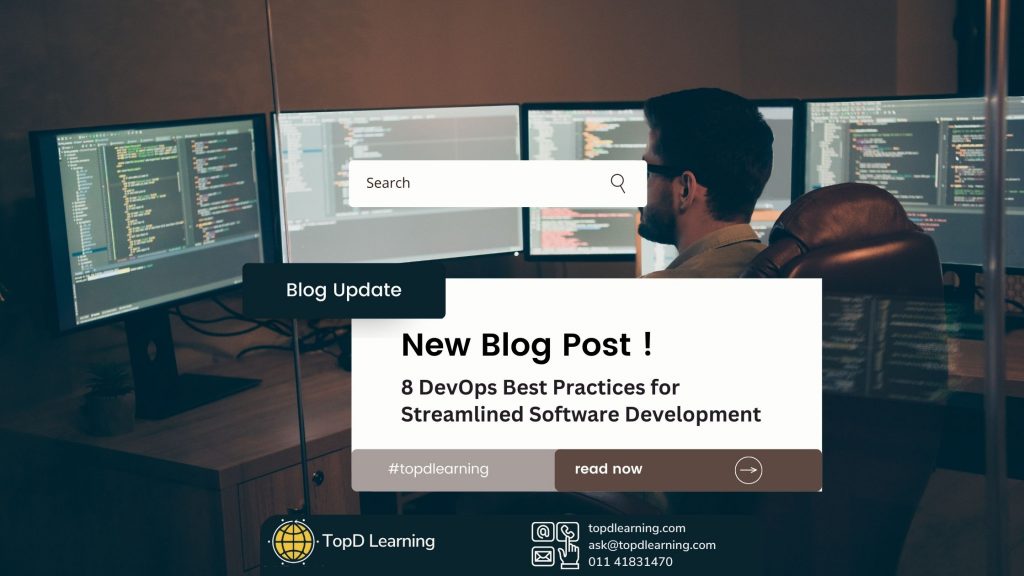Boost your team’s efficiency and collaboration with these 8 proven DevOps best practices, designed to transform software development.
Introduction
In today’s fast-paced digital landscape, organizations must constantly evolve to stay ahead of the competition. One of the most effective ways to accomplish this is by embracing DevOps, a set of practices that bridge the gap between software development and IT operations.
But how can your company make the most of DevOps and foster a culture of continuous learning? In this blog, we’ll explore 8 best practices for implementing DevOps to streamline software development, boost collaboration, and drive success. Let’s dive in and uncover the key strategies that can take your organization to new heights!
Table of Content
- What is DevOps?
- The importance of DevOps
- Best Practices for Effective DevOps
What is DevOps?
DevOps is a combination of the words “development” and “operations.” It’s a set of practices that aims to improve collaboration between software developers and IT operations teams, ultimately resulting in faster and more reliable software development and deployment. By breaking down traditional silos and fostering a culture of continuous improvement, DevOps seeks to optimize the entire software delivery process.
The importance of DevOps
In today’s fast-paced and competitive world, businesses need to release high-quality software more quickly than ever before. DevOps helps companies achieve this by streamlining the development process and eliminating bottlenecks.
When developers and operations teams work together effectively, they can identify and address issues earlier, reduce downtime, and improve overall software quality. The end result is a better product, delivered faster, and with fewer bugs.
Best Practices for Effective DevOps
Here are the 8 best practices for Effective DevOps
1. Embracing Agile Project Management:
Agile project management focuses on delivering value to customers faster by working in smaller increments and continuously evaluating requirements, plans, and results. By implementing agile methodologies like Scrum and Kanban, teams can effectively break large-scale projects into smaller tasks and respond to changes as they progress.
2. Shifting Left with CI/CD:
“Shifting left” means integrating testing early in the code development process. With continuous integration and continuous delivery (CI/CD), developers can fix bugs and improve code quality as they work on the relevant section of the codebase. This approach helps prevent delays caused by separate testing or QA teams and accelerates the development process.
3. Utilizing the Right Tools:
A successful DevOps toolchain requires selecting the appropriate tools for each phase of the DevOps lifecycle. These tools should have key capabilities that enhance software quality and delivery speed. When choosing DevOps tools, consider their functionality across all stages of the DevOps lifecycle.
4. Automating Processes:
Automation plays a crucial role in DevOps practices. Continuous integration and delivery allow developers to merge code regularly, reducing manual checks and streamlining the development process. Automated testing, such as end-to-end, unit, integration, and performance tests, further supports DevOps success.
5. Monitoring DevOps Pipeline and Applications:
Monitoring the DevOps pipeline helps prevent broken builds or failed tests from causing unnecessary delays. Additionally, monitoring production applications allows teams to identify failures or performance deficiencies before customers are impacted.
6. Implementing Observability:
As software development shifts towards cloud-native, microservice-based applications, observability becomes increasingly important. Combining logs, traces, and metrics helps teams understand and predict the functioning of complex systems, ultimately enhancing application performance and reliability.
7. Gathering Continuous Feedback:
Continuous feedback ensures that team members receive timely information to perform their jobs effectively. It helps developers address pipeline failures, access thorough code test results, and respond to production failures or performance deficiencies. With continuous feedback, DevOps teams can optimize for both speed and quality.
8. Fostering a Collaborative Culture:
DevOps thrives in an environment characterized by collaboration, transparency, trust, and empathy. Eliminating silos and promoting open communication between teams is essential for successful DevOps adoption. By building a culture that encourages teamwork and shared responsibility, organizations can fully embrace DevOps best practices.
Conclusion
Implementing these eight DevOps best practices can lead to streamlined software development and improved collaboration across teams. By fostering a culture of continuous learning and leveraging the right tools and methodologies, your organization can maximize its potential and achieve remarkable results.
To ensure your team stays ahead of the curve, consider investing in professional training courses, such as those offered by TopD Learning. Their DevOps and Agile Training courses can provide your team with the knowledge and skills needed to excel in today’s competitive landscape.


